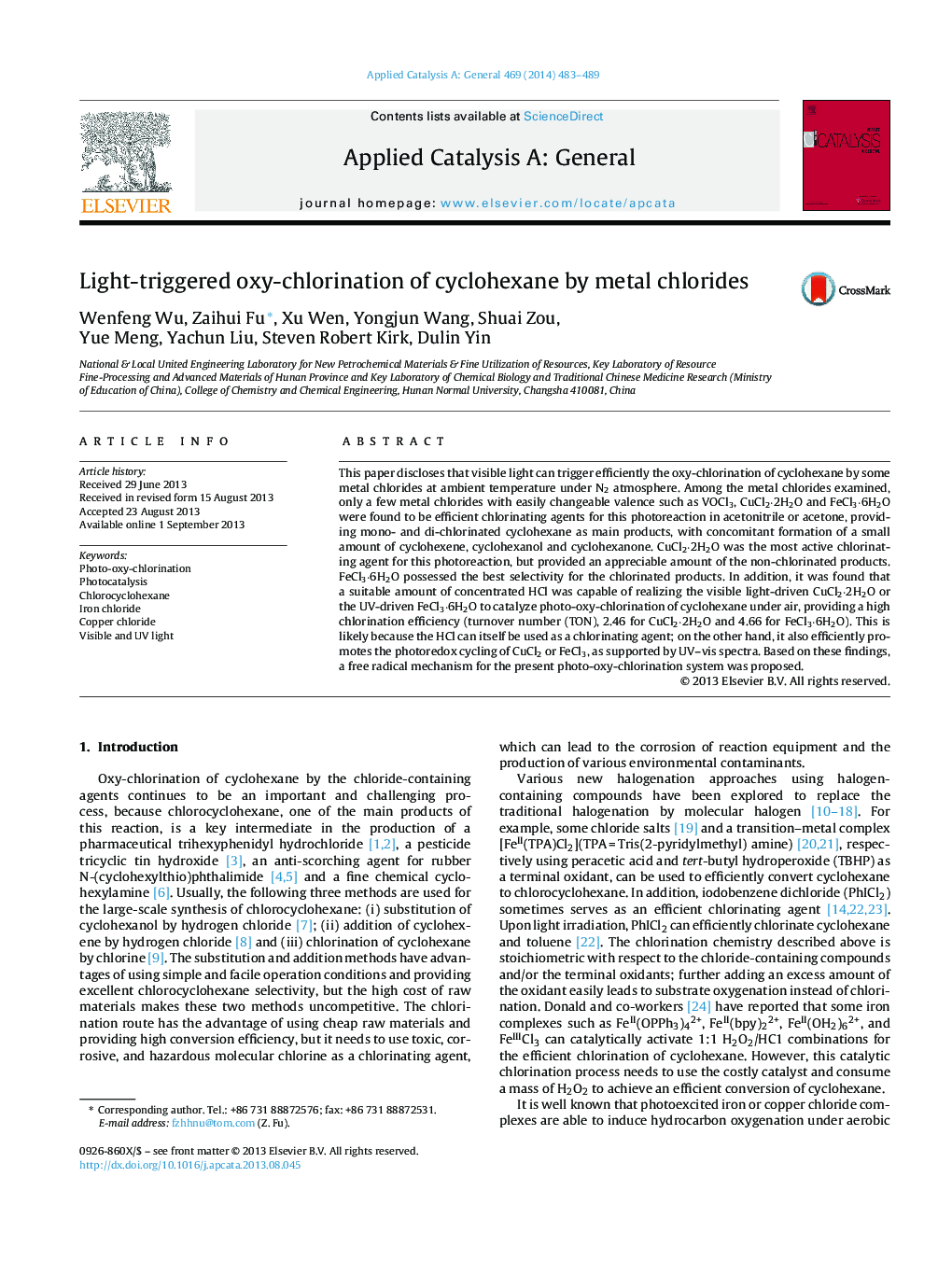| Article ID | Journal | Published Year | Pages | File Type |
|---|---|---|---|---|
| 40201 | Applied Catalysis A: General | 2014 | 7 Pages |
•Using FeCl3 as efficiently agent or catalyst for photo-chlorination of cyclohexane.•Utilization of more accessible visible light.•Utilization of more costeffective acetonitrile or acetone as solvent.•An excellent selectivity for chlorinated products.•The concentrated HCl significantly promotes this photocatalyzed chlorination.
This paper discloses that visible light can trigger efficiently the oxy-chlorination of cyclohexane by some metal chlorides at ambient temperature under N2 atmosphere. Among the metal chlorides examined, only a few metal chlorides with easily changeable valence such as VOCl3, CuCl2·2H2O and FeCl3·6H2O were found to be efficient chlorinating agents for this photoreaction in acetonitrile or acetone, providing mono- and di-chlorinated cyclohexane as main products, with concomitant formation of a small amount of cyclohexene, cyclohexanol and cyclohexanone. CuCl2·2H2O was the most active chlorinating agent for this photoreaction, but provided an appreciable amount of the non-chlorinated products. FeCl3·6H2O possessed the best selectivity for the chlorinated products. In addition, it was found that a suitable amount of concentrated HCl was capable of realizing the visible light-driven CuCl2·2H2O or the UV-driven FeCl3·6H2O to catalyze photo-oxy-chlorination of cyclohexane under air, providing a high chlorination efficiency (turnover number (TON), 2.46 for CuCl2·2H2O and 4.66 for FeCl3·6H2O). This is likely because the HCl can itself be used as a chlorinating agent; on the other hand, it also efficiently promotes the photoredox cycling of CuCl2 or FeCl3, as supported by UV–vis spectra. Based on these findings, a free radical mechanism for the present photo-oxy-chlorination system was proposed.
Graphical abstractThis paper discloses that visible light can trigger efficiently the oxy-chlorination of cyclohexane by some metal chlorides under N2 and the concentrated HCl was capable of realizing the visible light-driven CuCl2 or the UV-driven FeCl3 to efficiently catalyze this photoreaction under air.Figure optionsDownload full-size imageDownload high-quality image (170 K)Download as PowerPoint slide
